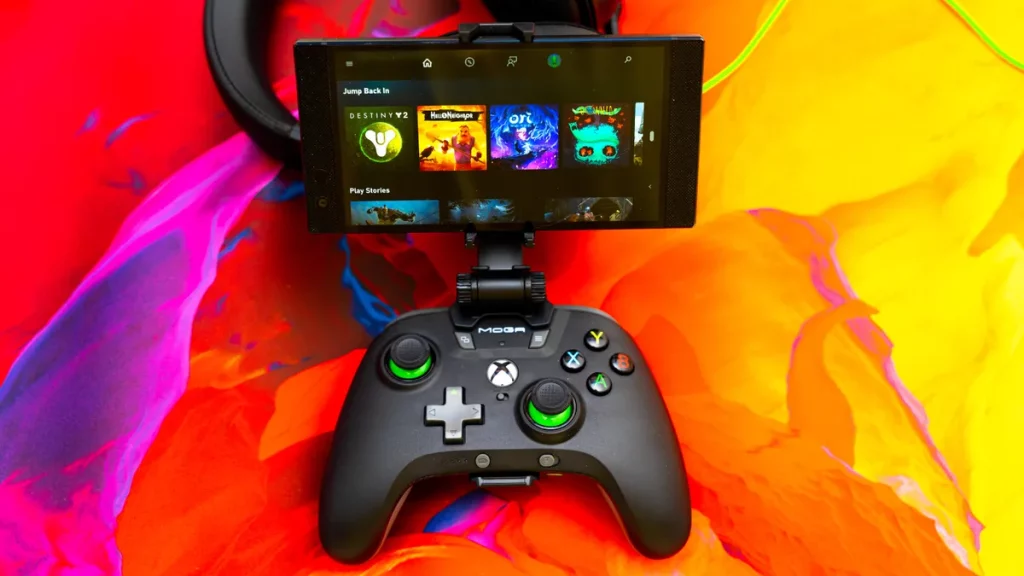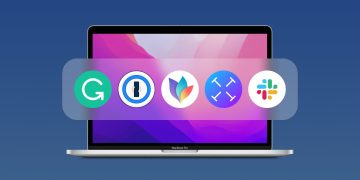Introduction
The video game industry has been on a continuous trajectory of innovation, with the advent of cloud gaming emerging as one of its most transformative trends. Cloud gaming enables players to stream games directly to their devices without the need for high-end hardware, such as gaming consoles or powerful PCs. With major players like Google Stadia, NVIDIA GeForce Now, and Microsoft’s xCloud entering the space, cloud gaming promises to revolutionize how we play games. But is it truly the future of video games, or is it just another passing trend? This article will explore the rapid rise of cloud gaming, its advantages and disadvantages, and how it is poised to impact traditional gaming platforms and developers.
1. Understanding Cloud Gaming: How It Works
1.1 The Basics of Cloud Gaming
Cloud gaming allows players to play video games via streaming services that run on remote servers rather than on local hardware. Essentially, the game is run on powerful servers, and the video and audio are streamed to the player’s device over the internet. The player’s input (controller or keyboard and mouse) is sent back to the server, which processes the data and sends the results back to the device in real time.
Popular cloud gaming platforms include:
- NVIDIA GeForce Now: Allows users to stream games they already own from platforms like Steam and Epic Games.
- Google Stadia: Google’s cloud gaming service, which hosts a library of games for instant play.
- Xbox Cloud Gaming (xCloud): Microsoft’s cloud gaming service, offering access to a large selection of Xbox Game Pass titles.
- Amazon Luna: Amazon’s cloud gaming platform, offering a mix of popular and indie games via subscription models.
1.2 Technology Behind Cloud Gaming
Cloud gaming relies on a combination of powerful servers, high-speed internet, and low-latency streaming technology. The servers are equipped with high-performance GPUs (graphics processing units) and CPUs (central processing units) to handle the heavy computational requirements of modern video games. Players’ inputs are transmitted via cloud protocols, allowing for seamless control of the game despite it being processed miles away. The critical components of cloud gaming include:
- Data Centers: Hosting the powerful gaming servers.
- High-Speed Internet: Essential for reducing lag and providing smooth gameplay.
- Low Latency Protocols: Reducing input delay to create a responsive gaming experience.
2. The Advantages of Cloud Gaming
Cloud gaming offers several notable benefits, which have contributed to its growing popularity and adoption. However, as with any technology, these advantages come with their own set of challenges.
2.1 Accessibility and Convenience
One of the most significant advantages of cloud gaming is its accessibility. Players no longer need to invest in expensive gaming hardware such as high-end PCs or consoles. Instead, they can stream games directly to a variety of devices, including smartphones, tablets, smart TVs, and even lower-spec computers. This democratization of gaming opens up the experience to a broader audience and makes gaming more accessible in regions with limited access to high-end gaming hardware.
2.2 Instant Play and Game Library Access
Cloud gaming platforms often offer “instant play,” which eliminates the need to wait for long download times or updates. Players can simply access a game and start playing immediately, reducing friction in the gaming experience. Additionally, platforms like Xbox Game Pass Ultimate and Google Stadia provide access to large libraries of games for a subscription fee, making it easy for players to explore a wide variety of titles without purchasing each one individually.
2.3 Cross-Device Compatibility
Cloud gaming platforms allow players to switch between devices seamlessly. A player could start a game on their PC, then switch to their smartphone or tablet without losing progress. This flexibility ensures that gaming is not tied to a single device, allowing players to enjoy their favorite games wherever they are, as long as they have an internet connection.
2.4 Lower Cost of Entry
Cloud gaming eliminates the need for expensive gaming hardware, allowing gamers to play high-end titles on relatively cheap devices. This makes gaming more affordable, especially for those who cannot afford the latest consoles or gaming PCs. The lower cost of entry is particularly appealing to casual gamers or those who are new to gaming.

3. The Disadvantages of Cloud Gaming
Despite the clear advantages, cloud gaming also presents several significant drawbacks that could hinder its widespread adoption. These challenges range from technical limitations to market competition and consumer preferences.
3.1 Dependence on Internet Speed and Latency
The most significant disadvantage of cloud gaming is the heavy reliance on high-speed, low-latency internet. Without a fast and stable internet connection, players may experience lag, buffering, or reduced video quality, which can severely affect gameplay, especially in fast-paced genres like shooters or racing games. In regions with poor internet infrastructure, cloud gaming is less viable, limiting its accessibility.
3.2 Data Usage and Bandwidth Concerns
Cloud gaming can consume significant amounts of data, especially when playing graphically intense games. For example, streaming a game in 4K resolution can use up to 15GB of data per hour. This may pose problems for players in areas with limited or expensive internet data plans. Furthermore, data caps imposed by some ISPs (Internet Service Providers) could make cloud gaming impractical for some users.
3.3 Limited Game Selection
While cloud gaming platforms offer access to large game libraries, they do not have access to every game in existence. Some developers or publishers may choose to exclude their titles from cloud gaming services, or cloud gaming versions of games may feature performance compromises compared to locally run versions. This limits the selection available to players and could hinder the appeal of these platforms for hardcore gamers who prefer to own their games outright.
3.4 Ownership and Licensing Issues
Another challenge for cloud gaming services is the issue of game ownership. When you buy a game on a cloud platform, you’re essentially licensing access to the game rather than owning it. This means that players may lose access to a game if it is removed from the platform or if the platform itself is discontinued. In contrast, traditional gaming systems allow players to own physical or digital copies of games that remain in their libraries indefinitely.
4. The Impact of Cloud Gaming on Traditional Gaming Platforms and Developers
As cloud gaming continues to grow, it will likely have a significant impact on traditional gaming platforms and the game development industry.
4.1 The Future of Consoles and PCs
Cloud gaming has the potential to disrupt the traditional console market. Companies like Microsoft, Sony, and Nintendo have long relied on selling consoles as a primary revenue model, but cloud gaming reduces the need for expensive hardware. This could push traditional console manufacturers to shift their business models, focusing on services like game streaming or subscription-based access to exclusive titles. For example, Microsoft has already embraced the idea of “game streaming” with its xCloud platform and Xbox Game Pass service, integrating cloud gaming into its ecosystem.
4.2 Impact on Game Developers
For game developers, cloud gaming presents new opportunities and challenges. On the one hand, cloud gaming allows developers to reach a larger audience without worrying about hardware limitations, as games can be streamed to a variety of devices. On the other hand, it may require developers to rethink how they design and optimize games for the cloud, ensuring that they are playable across different platforms with minimal performance issues. Additionally, game streaming platforms often operate on revenue-sharing models, meaning that developers must adjust their pricing strategies and distribution methods.
4.3 Competition with Traditional Game Sales
As cloud gaming platforms adopt subscription-based models, the traditional model of buying games outright could be affected. Players may increasingly opt for all-you-can-play services like Xbox Game Pass, which allow access to a broad selection of games for a monthly fee. This shift could reduce the revenue from individual game sales, forcing developers and publishers to adapt their business strategies to stay profitable.
5. Cloud Gaming: A Passing Trend or a True Revolution?
While cloud gaming has significant potential, it is not without its challenges. For cloud gaming to truly replace traditional gaming platforms, advancements in internet infrastructure, particularly in terms of speed and reliability, are necessary. Moreover, for players to fully embrace cloud gaming, issues of game ownership, game selection, and performance must be addressed.
Despite these challenges, cloud gaming represents a paradigm shift in how we consume video games, and its potential to democratize gaming and make it more accessible cannot be ignored. Whether it will replace traditional gaming systems or coexist alongside them remains to be seen. However, the trend toward cloud gaming is undeniable, and it will likely play a major role in the future of the gaming industry.
Conclusion
Cloud gaming is not just a passing fad; it is a disruptive force that is reshaping the gaming landscape. While it offers clear advantages in terms of accessibility, convenience, and cost, it also faces significant hurdles, including internet dependency, limited game selection, and questions of ownership. As the technology matures and infrastructure improves, cloud gaming could become a central part of the gaming experience. However, whether it can replace traditional consoles and PCs remains an open question. Regardless, the future of gaming is undoubtedly intertwined with the growth of cloud technologies, and it will be exciting to see how this revolution unfolds.


















































Discussion about this post